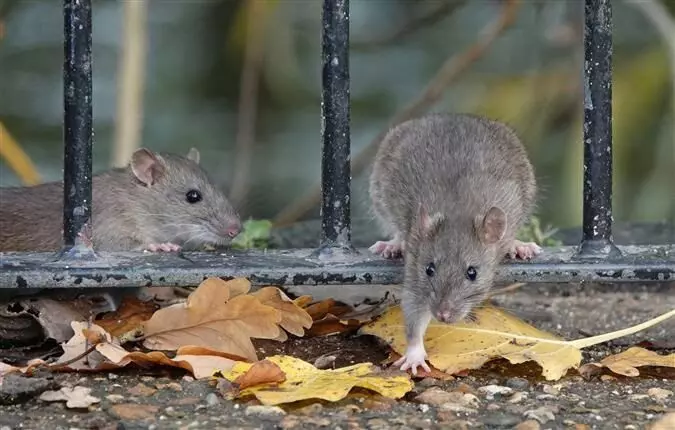
Rodents likely origin of the Omicron variant: study
text_fieldsScientists believe that rats may have been the source of the SARS-CoV-2 Omicron mutation.
Scientists are examining how SARS-CoV-2 acquired so many mutations in the second year of the pandemic, and they hypothesise that reverse zoonosis—the circulation of the virus in rodent populations and its subsequent spread as a zoonosis—was likely responsible for the evolution and emergence of the Omicron VOC.
The researchers from Christian Medical College, Vellore, and other Indian institutes have proposed their theory in a paper published in the journal Current Science for the likely origin of the Omicron variant of SARS-CoV-2, the virus causing COVID-19.
A previous study had suggested that the Omicron variant of the SARS-CoV-2 virus may have been transmitted from an animal species to humans.
In this paper, they began by putting forth two hypotheses for the likely origin of the Omicron variant - first, mutations accumulating in an immune-compromised individual with prolonged SARS-CoV-2 infection, and second, infection by reverse zoonosis in an animal species, enzootic transmission in that species with adaptive mutations, and eventual transmission as zoonosis, back to human subjects.
The researchers said that while both are possible, the latter seemed to be more likely.
They ruled out the first hypothesis on the basis of a UK report according to which over the duration of 7-9 months when the infection persisted in three HIV-positive persons, only 2-3 new mutations were detected in the RBD region of the spike protein of the Alpha variant.
They said that, therefore, it was unlikely for the RBD region to have acquired close to 15 mutations in less than two years in a single immune-compromised human host with chronic SARS-CoV-2 infection. Further, they said that this could not explain the simultaneous appearance of several sub-variants.
For the second hypothesis, the researchers said there were several pieces of evidence in support of it.
They took the support of Chinese research which had reported with evidence that rodents were the animal hosts.
Further, in this paper, the researchers said that there was evidence of the molecular clock theory appearing to break down during inter-species transmission and adaptation in a new host species. Molecular clock theory states that DNA and protein sequences evolve at a rate that is relatively constant over time and among different organisms. This, therefore, could address how SARS-CoV-2 acquired mutations faster in another animal than the slow pace observed in humans.
Regarding the number of mutations on the spike protein gene, they said in their paper that reverse zoonosis and enzootic transmission had been investigated in white-tailed deer in North America, with the enzootic virus found to be highly divergent with nine mutations on the spike protein gene. The most likely ancestor, they said, the human virus variant was Beta VOC.
Further, they said that a research in Finland had found that mice are readily infected by intranasal inoculation and also efficiently transmit the virus horizontally to cage mates. This, they said, indicated the potential for enzootic spread in rodents and also hinted at the possibility of the Southern African rodents to have been infected by the Beta VOC.
The researchers then said that reverse zoonosis with SARS-CoV-2 infection had occurred in this hamster colony in the Netherlands, followed by hamster-to-hamster spread and subsequently zoonotic spread from them to human subjects, suggesting it could have happened in the case of Omicron as well.
However, the researchers said that while there was enough evidence for reverse zoonosis and enzootic transmission of the virus, the question of how rodents could get infected in the first place remained unanswered.
In answer to this, they suggested rodent-human contacts in African low-income households to have facilitated virus transmission.
Suggesting air-borne transmission from man-to-mouse or from mouse-to-man in areas with high rodent density, the researchers said that in mid and low-income countries, in towns and villages, rats and house mice live in close proximity to human habitations. In lepromatous leprosy, prevalent in the region with total loss of touch and pain sensations, fingers and toes are vulnerable to rodent bites while sleeping, explaining recurrent ulcers and loss of tissue. Rat bites are known to transmit bacterial and virus infections to humans. House mice are nocturnal animals, and they do run around on floors; in many households, people sleep on mats on the floor, they said.
All this genetic and ecological circumstantial evidence prompted the researchers, they said, to propose reverse zoonosis, circulation in rodent population and subsequent spread as a zoonosis in human subjects as the most probable theory of the evolution and emergence of Omicron VOC.





